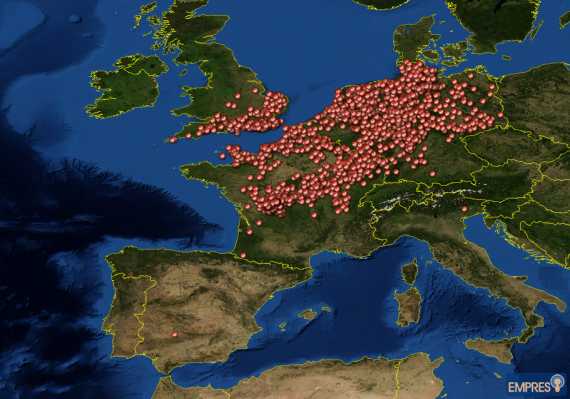The Schmallenberg virus is related to the Shamonda and the Sathuperi viruses which infect ruminants in Southeast Asia. Recent research in Japan strongly points to the Schmallenberg virus being a reassortment (a mixing of two viruses) because its RNA corresponds very much to Japanese strains of both the Sathuperi and the Shamonda viruses. ‘This information is of great importance in the search for the source of its spread in Europe,’ says researcher Armin Elbers of the Central Veterinary Institute (CVI). Japan was confronted in 2010 with many calves born with deformities. Subsequent research there pointed to the Shamonda virus being the likely cause. Researchers in Japan have now discovered that the Schmallenberg virus consists of RNA segments from the Sathuperi virus, as well as the Shamonda virus. The RNA of viruses can switch around easily if two viruses simultaneously affect a human being or an animal. Since then, more evidence has been uncovered to show that the spread of the Schmallenberg virus in 2011was carried out by midges from the east of the Netherlands. ‘We carried out studies to find out which age groups of Dutch dairy cows carry anti-bodies against the virus,’ says Elbers. ‘The results suggest that the virus was brought into the Netherlands no earlier than in 2011.’ Moreover, in the autumn of 2011, researchers in Denmark, Belgium and Italy caught midges carrying the virus. Although the CVI is still carrying out research into the virus in midges, the fact remains that this insect is the main carrier of the Schmallenberg virus in Europe. Furthermore, the CVI is doing a sampling test to find out how many cows have developed anti-bodies against the virus. More than 80 percent of the cows in the north and the south of the Netherlands are infected, and about 60 percent of the cows in the east of the Netherlands are infected. This shows that the virus first showed up to the east of the Netherlands – probably coming from Germany, says Elbers – and subsequently spread further into the Netherlands. Last year, many more cows, goats and sheep were infected by the Schmallenberg virus than the more than four thousand female animals which gave birth to deformed calves or lambs, says Elbers. ‘Animals are born with deformities only if the mothers are infected by the virus at a critical stage during pregnancy. The deformed animals are only the tip of the iceberg. By analyzing anti-bodies against the virus in dairy animals in the Netherlands, we have discovered that a large number of the animals have been in contact with the virus without showing any visible signs.’ Further research has to be carried out to find out if these anti-bodies would continue to protect the ruminants against an infection by the virus.
Schmallenberg virus comes from Southeast Asia
The Schmallenberg virus - which can cause deformities in newborn calves, goats and lambs - could have come from Southeast Asia, according to recent research findings from Japan.

